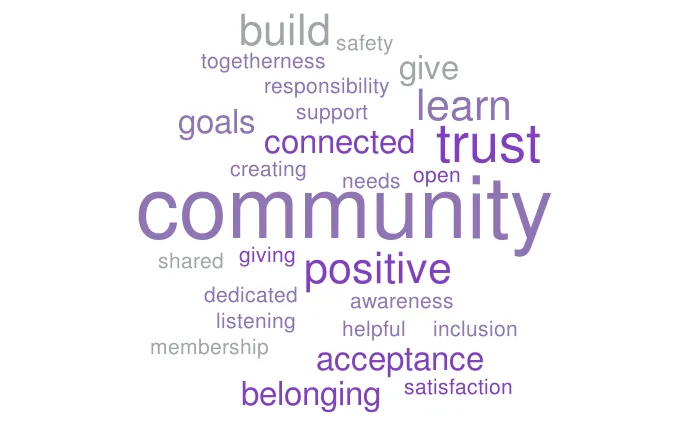
Building Community
In education there is a saying that states, "go slow to go fast." I'm sure you understand what that means, and it applies to academics and instruction, but it also is so important when we're getting to know our students, and as a new teacher, getting to know our colleagues. The best way to do this, no matter how long you've been teaching, is by building community within your school and within your classroom. It's vital to the success of our students as well as the function of our schools.
Having a positive relationship with colleagues will not only help morale, but it will bring about trust and consistency. If teachers are on the same page with one another, following the same rules and using the same consequences, it’s like two parents who are presenting kids with a united front – there’s no way in or around the decision. Respect will come when kids know that there isn’t a weak link, that every teacher and staff member is on the same page. And guess what? Parents will, too. There won’t be a division among staff. Teachers are individuals in their content and their pedagogy, but when it comes to enforcing rules and management, they have to have a collective voice. Colleagues with a collective voice build community within their school. What about in their classrooms?
The most important thing to remember is that kids come first. Our students are our responsibility when they are in our care. We’ve been hired to instruct them according to the curriculum approved by the local school board, and written by colleagues. In order to instruct, students need to know that their teacher cares and is invested in them. Connection and community building in our classrooms is priority number 1.
There are a number of different strategies to help build community in a classroom. Restorative Circles are one strategy. A strategy that I used to use, went away from when I felt I was pressed for time in my curriculum, and now have gone back to, in order to create community, once again!

There are lists and lists of strategies that are grade and age appropriate. Using something that gets kids talking and warmed up in the classroom environment is not only good for them, but good for the teacher as well. It’s a good relationship building component, a point of interest or conversation for the teacher to have with individual students.
Other community building programs include creating safe spaces for students to share their ideas. Setting classroom agreements, goals, consequences is a wonderful way to keep students accountable for learning and their behavior. Students will understand the foundations of gratitude and empathy as they build relationships with one another. And the teacher leads the way by modeling the same behavior that is expected. Every behavior is a learned experience in the classroom. It’s fostered throughout the school year.
There are many different ways to build community within classrooms. Any teacher can research any strategy online and try to see if it works with their classes and their content. I typically have a bell-ringing activity that is built into my lesson plans that either builds community within the classroom or introduces the concepts that will be taught within that hour. It gets kids’ brains activated and on task. I also like to use conversation starters with small groups. This also gets kids talking and not stuck to their phones. I’ve also used yoga poses to start a class because it introduces a way to start fresh that hour if they’re coming from a place that might’ve been stressful or overstimulated. All of these strategies work well in my classroom, but depending on the ages of the students and the comfortability of the teacher, variations might work better or other activities might work, too.
Kids come first - priority #1. Self-care - #2. On a school day, kids come first. After school or during breaks (prep periods) take care of yourself. If you start a routine at the beginning of the school year of going for a 20 minute walk to just give yourself a brain break, it’s starting a little self-care. Self-care has to be consistent. And it doesn’t have to be the same thing all the time. Hang out with a friend and laugh! Watch a show! Go to a game! Have a beverage! Do something healthy for yourself. You can’t take care of priority #1 if you’re not healthy. Give yourself a break. The rest of all the other duties can wait.
Investing in ourselves as teachers and building community among our colleagues and students will boost the morale of the school. A positive school culture is a great environment to work in. People respect and help each other out and are willing to share ideas and invest time. New teachers feel wanted and included as a team member and the veteran teachers feel the same because everyone has something to add to the collective whole.
As we proceed throughout September and October, keep in mind that building community and building relationships and connections is the perfect way to start slow, so that the learning will occur a little quicker because our students trust us. They want to please us and more importantly, want to be proud of the work that they've accomplished and the learning that they have done. So, continue to slow down, take a breath, ask questions, give breaks, have fun, talk with colleagues, open up communication with parents -- all the things that will make your school year go a little bit easier and definitely less stressful.
